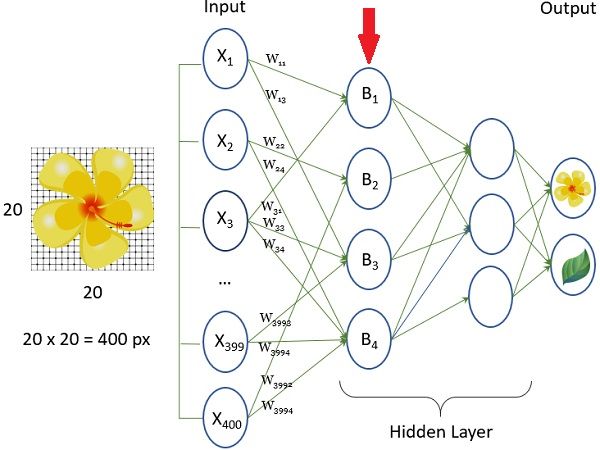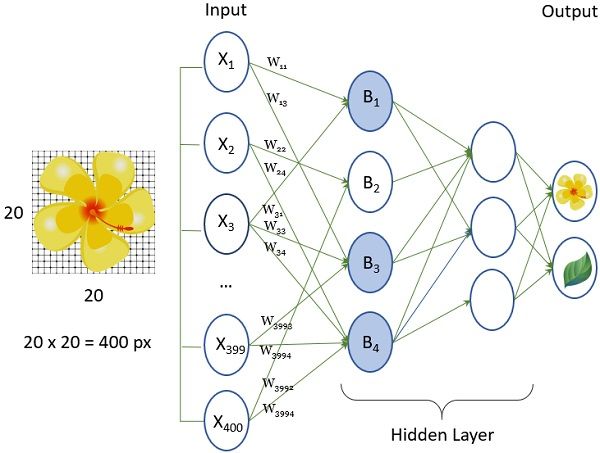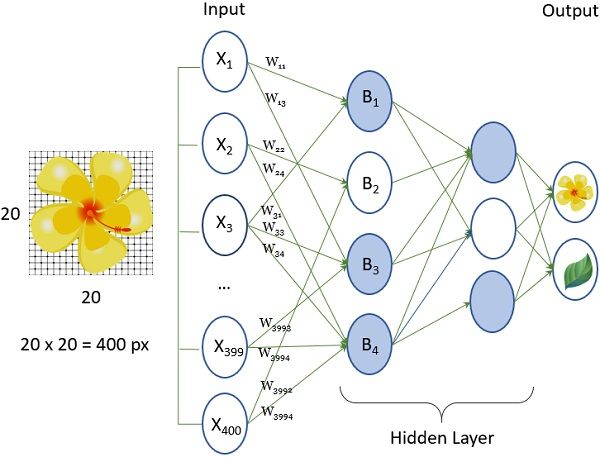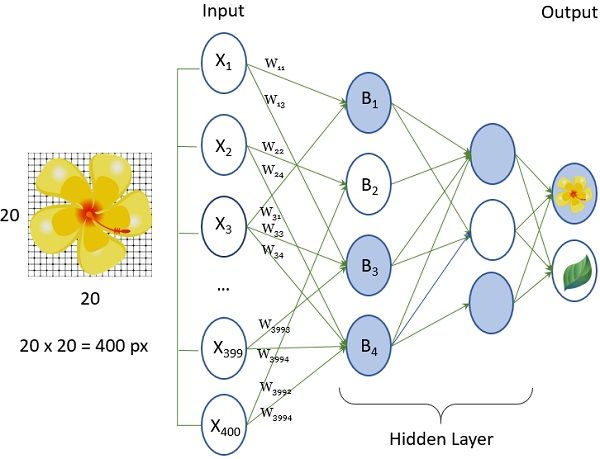The neural network in data mining is a classification method that takes the input, trains itself to recognize the pattern of input data and predicts the output for new input of a similar kind.
Neural network forms the basis of deep learning, a subfield of machine learning that comes under artificial intelligence. Designing neural network algorithms is inspired by the structure of the human brain.
Just as the human brain is responsible for intelligence and its discriminating power, the neural network also mimics the human brain and learns from its experience and applies this learning for classification and prediction.
Content: Neural Network in Data Mining
- What is Neural Network?
- How Neural Network Works?
- Application of Neural Network
- Types of Neural Network
What is Neural Network?
A neural network is a set of connected input/output units. A weight is associated with each connection, which is adjusted by the network during the learning process. So that, the network is able to predict the correct class label of input tuples.
The artificial neural network is designed after the structure of the human brain. The structure has an input/output unit that depicts the neuron of the human brain we refer to it as a node and we refer to the connection between the nodes as a link. The figure below represents the artificial neuron network.
How Neural Network Works?
Knowing the overall structure of the neural network lets us understand the working of the neural network with the help of a simple example.
Do you know how we are able to classify a flower and leaf? Consider that we see a picture of a flower which is composed of 20 x 20 pixels i.e. equal to 400 hundred pixels
The input nodes of the network receive a set of input values. The number of input nodes is equivalent to the number of input variables.
Now each of these pixels is fed as an input to the first layer of the neural network i.e. in our example X1 to X400.
The first layer of the network is connected to the next layer with a link and each link is associated with a weight.
Now, to evaluate the value for each neuron in the next layer we implement a summation function.
Say to evaluate the value for the first neuron in the second layer of our example we would implement a summation function:
= [X1*W11 + X3*W31]

This summation result is sent to the first neuron of the next layer. Now each neuron in the hidden layer has a numerical value associated with it which we refer to as ‘bias’.
So here, the summation result is added to the bias B1.
= [X1*W11 + X3*W31] + B1
This result is further passed to a threshold activation function which decides whether this particular neuron will be activated or not.
Output = Activation Function ([X1*W11 + X3*W31] + B1)
The activated neuron further sends this information to the neurons present in the next layer.

In this way, the information is propagated over the network through the links and we refer to it as forwarding propagation.

As the information reaches the output layer the neuron with the highest value determines the result. The values of a neuron at the outer layer are nothing but probability.
The neuron with the highest probability at the output layer is the output predicted by the neural network. In our case, the neuron associated with the flower has the highest probability of depicting the correct answer.

Sometimes when the network is yet to be trained it might predict the incorrect answer. Well to figure this out, the network is also fed along with the output. The network compares the predicted output with the actual output. To correct the output, the networks’ weights are adjusted until the network predicts the correct answer.
Application of Neural Network in Data Mining
The neural network in data mining performs the task such as:
- Classification
- Clustering or categorization
- Prediction
- Function approximation
- Optimization
- Retrieval by content or control
Types of Neural Network
The are several types of the neural networks depending on their behaviour they are:
- Recurrent Neural Network
- Convolution Neural Network
- Radial Basis Function Neural Network
- Feed Forward Neural Network
- Modular Neural Network
Recurrent Neural Network (RNN)
The recurrent neural network is adapted for the data that has sequencing. The data with sequencing may be such that the one data point be depending on the previous data point. In such cases, the neural network must be modified to inntegrate the dependencies between the data points. RNN include the memory that can store the information about the previous data points that helps in generating the next output in the sequence.
Convolutional Neural Network
The convolutional neural network is used to recognise images and is used in the process specifically designed to process data pixels. It is a deep learning algorithm that intakes an image and assigns importance to various aspects of the image so that the network is able to differentiate one image from the other.
Radial Basis Function Neural Network
This kind of neural network uses a radial basis function as an activation function and it is the fastest learning network. This neural network is used for function approximation, classification and time series prediction that further helps in predicting the stock price, fraud detection in financial transactions etc.
Feed Forward Neural Network
In this neural network, the information is propagated in the forward direction only. However, there are no cycles or loops in the data propagation. The feed-forward network is specially used for supervised learning, pattern recognition and classification, non-linear regression, and function approximation.
Modular Neural Network
This neural network is used for solving complex AI problems. It is characterized by a series of neural networks where each neural network is independent and serves as a module in the network. Each module operates on separate input and performs a subtask from the task that the whole network is hoped to perform.
So, this is all about the neural network in data mining that has the same structure as the human brain. Similar to the human brain the neural network takes the input process and predicts the output. Thus, it is nowadays used in much artificial intelligence (AI) systems such as face recognition, music composition, real-time translation, etc.

1stepgrow says
Thank you for the valuable information on the blog. I am not an expert in blog writing, but I am reading your content slightly, increasing my confidence in how to give the information properly. Your presentation was also good, and I understood the information easily.